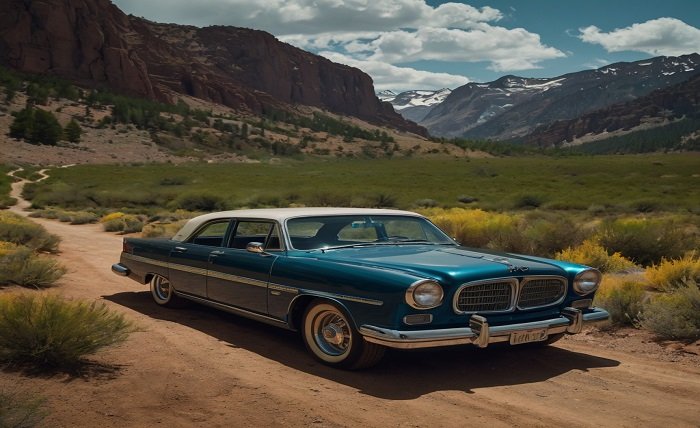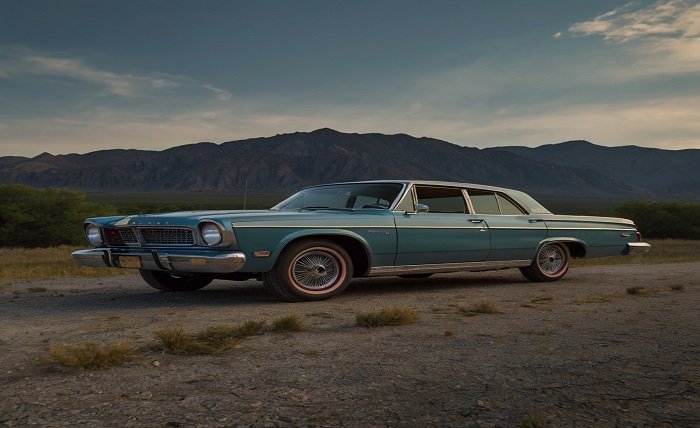One of the most recognizable tiny automobiles ever made in the US is the Rambler American, a classic piece of automotive history. Constructed in an era when American automakers prioritized big, opulent cars, the Rambler American was notable for its affordability, usefulness, and contemporary styling. This car made a lasting impression on the industry from its introduction in the late 1950s until the end of its manufacturing. This blog post will examine the history, development, models, aesthetics, and enduring influence of the Rambler American, delving into why this vehicle is still held in such high regard by enthusiasts and collectors.
Read More About: yeti cooler
The Origins of the Rambler American

In 1958, when the Rambler American first appeared, tiny cars were rather uncommon in the US. To compete with the larger, more expensive cars that now dominate the market, American Motors Corporation (AMC) set out to design an automobile that was both inexpensive and affordable. AMC, under the direction of George W. Romney, realized that there was a market for cheap, fuel-efficient, and easily maneuverable tiny automobiles. And thus the Rambler American was born—a tiny, elegant vehicle that combined functionality with style.
Reviving the original Rambler moniker was a calculated move. The name itself had a long history that dates back to the early 1900s, and AMC was hoping that consumers would identify with this well-established brand. As AMC emerged as a significant player in the car industry, the Rambler American came to represent modernity and simplicity.
Design and Features of the Rambler American
The distinctive design of the Rambler American was among its most notable features. The Rambler American defied the trend of American cars growing larger at a time when it was designed to be small and efficient. Though very antiquated by 1958 standards, the car’s original design was based on the Nash Rambler, which was advantageous to AMC. Because of the design’s simplicity, the firm was able to maintain low production costs, which made the Rambler American a viable choice for the typical consumer.
The car’s lightweight construction helped it get higher fuel economy, and its small size made it ideal for city driving. The Rambler American’s design changed throughout time, becoming more streamlined, having better aerodynamics, and having a more upscale cabin. Being among the first American vehicles to prioritize economy over style, it was particularly well-liked by youthful consumers and city dwellers.
Evolution Through the Decades
Between 1958 and 1969, the Rambler American had several important changes in manufacture. The base versions of the first generation of models (1958–1960) had few extras and were reasonably priced. But with many local and international automakers entering the market, AMC realized they needed to improve the Rambler American’s appeal.
When the second generation was released in 1961, it had a more contemporary style, better engine choices, and more trim levels. The Rambler American gained a more sporty appeal in 1963 with the release of hardtop and convertible variants. The biggest modifications were made during the third and last generation (1964–1969), which included a longer wheelbase and more potent engine options. From a basic economic vehicle, the Rambler American had evolved into a chic, adaptable small automobile that could satisfy a range of demands.
Popular Models of the Rambler American
The Rambler American was offered in a broad range of models and trim levels over its existence to accommodate various market niches. Among the most-liked models were:
The base model, the Rambler American 220: was renowned for its simplicity and affordability. For customers searching for a cost-effective daily driver, it was ideal.
Rambler American 440: This model had extra features added to it, such as upgraded trim, a chrome grille, and improved upholstery. Customers looking for a little extra style and comfort in their small automobile were the target market.
Rambler American Rogue: The sportiest variant of the Rambler American, it was first released in 1966. Younger buyers seeking performance and style were drawn to its sleek, fastback design and more potent engine.
Although every model featured a distinct set of characteristics, all Rambler Americans adhered to the same key values: economy, practicality, and affordability.
Cultural Significance of the Rambler American
The Rambler American was more than just a vehicle; in the late 1950s and early 1960s, it represented shifting social mores. The need for more compact, energy-efficient cars increased as more people relocated to cities. The gas-guzzling, large cars that had ruled the highways for decades were replaced by the Rambler American, which represented the change in transportation.
The Rambler American was frequently depicted in popular culture as a young, urban professional and member of the working class who preferred thrift over luxury. For people who want dependable transportation without the extravagance of the larger cars of the day, this was the perfect vehicle. The success of the vehicle was evidence of AMC’s ability to understand the market and provide a product that appealed to a broad spectrum of buyers.
The Rambler American’s Role in AMC’s Success
In the late 1950s and early 1960s, the Rambler” American was essential to American Motors Corporation’s success. The Rambler” American assisted AMC in carving out a place in the compact automobile market during a period when the business was finding it difficult to compete with the “Big Three” (Ford, General Motors, and Chrysler).
The Rambler” American regularly outsold several of its larger competitors, demonstrating the success of AMC’s decision to concentrate on tiny automobiles. Because of the car’s popularity, AMC was able to stay afloat in a cutthroat market and keep creating cutting-edge automobiles. Despite being phased out in 1969, the Rambler American’s influence could still be seen in the company’s following models, including the AMC Hornet and Gremlin.
The Legacy of the Rambler American Today
The Rambler” American’s legacy endures despite its production ceasing in 1969. The vehicle is now highly prized by collectors and fans of vintage automobiles. At auto events and auctions, restored vehicles are on display as they are recognized for their special place in automotive history.
The compact vehicle revolution that ruled the industry in the 1970s and beyond was also made possible by the Rambler” American. Long after production was completed, consumers continued to find resonance in its emphasis on cost, pragmatism, and efficiency. Many saw the Rambler” American as a representation of a more direct, uncomplicated approach to automobile design—one that prioritized functionality over flair but was nevertheless able to produce both.
Conclusion
More than just a little automobile, the Rambler” American represents creativity and adaptation in the American auto industry. The Rambler” American made a lasting impression throughout its development from a useful, affordable car to a chic and adaptable little car. Regardless of your interest in automotive history or vintage cars in general, the Rambler” American is deserving of praise for having had a significant influence on the development of compact cars.
Read More About: technewztop
FAQ
Which years did the Rambler” American come out with?
American Motors Corporation built the Rambler” American from 1958 to 1969.
What was unique about the Rambler” American in its day?
Known for its practical design, fuel efficiency, affordability, and compact size, the Rambler” American stood in stark contrast to the larger cars that dominated the market at the time.
Which Rambler” American models are currently in demand?
The Rambler American 220, Rambler” American 440, and the sporty Rambler American Rogue are popular models.
What role does the Rambler” American play in AMC’s past?
By concentrating on small, efficient automobiles, AMC was able to compete with larger automakers and remain in business while still innovating thanks to the success of the Rambler” American.
Are Americans who walk a lot still in favor today?
Indeed, restored copies of the Rambler” American are frequently spotted at auto exhibitions and auctions, and the vehicle is highly appreciated among collectors and fans of vintage cars.

